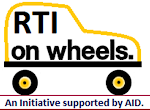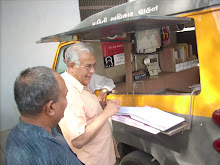Bar & Bench: Monday, April 6, 2020.
A Single Judge Bench of Justice Jayant Nath set aside an order by CIC which held that EVMs came within the ambit of the RTI Act.
The Delhi High Court has held that an Electronic Voting Machine (EVM) does not qualify as "information" in terms of Section 2(f) of the Right to Information Act and therefore, one cannot seek access to an EVM under the Act.
The order was passed by a Single Judge Bench of Justice Jayant Nath in a challenge preferred by the ELection Commission of India against a decision passed by the Chief Information Commissioner (CIC).
One Razaak K Haidar had moved an application under the RTI Act seeking access to an EVM maintained by the Election Commission. This application was, however, rejected by the Central Public Information Officer. In the appeal, the Appellate Authority reiterated that EVMs were not information in terms of Section 6(1) of the RTI Act.
Aggrieved by the orders, Haidar preferred an appeal under Section 19(3) of the RTI Act before the CIC, which held that EVMs come within the ambit of the definition of “information” and were therefore subject to the RTI Act.
The ELection Commission thereafter moved the High Court. In its petition filed through Advocate Siddhant Kumar, the Election Commission assailed the finding that EVM came within the definition of information under the RTI Act. It contended that the conclusion was erroneous since the list of items included in the definition as per Section 2(f) of the RTI Act ought to be read ejusdem generis.
After hearing the counsel for the petitioner, the Court noted that the RTI applicant sought an entire EVM which was used by Election Commission for conducting elections.
It then perused the RTI Act and stated that from a reading of Section 2(f), it was clear that it dealt with records, document, memo, e-mails, opinions, advices, press releases, circulars, orders, logbooks, contracts, reports, papers, samples, models, data material held in any electronic form and information relating to any private body which can be accessed by a public authority under any other law for the time being in force.
The Court opined that the attempt to only rely upon the word "models", as used in section 2(f) of the Act, to claim an EVM under the RTI Act was "misplaced".
Recording that a 'model' usually represented a three dimensional representation of a thing or proposed structure, typically on a smaller scale than the original, the Court observed,
"Clearly, an EVM which is sought for by this RTI application is not miniature/replica and hence cannot said to be a model. It cannot be termed to be information within the meaning of Section 2(f) of the Act."
The Court also relied on the Supreme Court's decision in Central Board of Secondary Education & Anr. v. Aditya Bandhopadhyay & Ors., (2011) to state that Section 3 of RTI Act gave citizens only the right to access information and not any other consequential relief.
In conclusion, the Court set aside the order passed by the CIC as it held,
".. the aforesaid application seeking an EVM is actually an application for supply of a product and not any information. It is beyond the scope of the RTI Act. In my opinion, the impugned order of CIC suffers from manifest error. The same is set aside." The Election Commission was represented by Advocate Sidhant Kumar. None appeared for the CIC.














































































